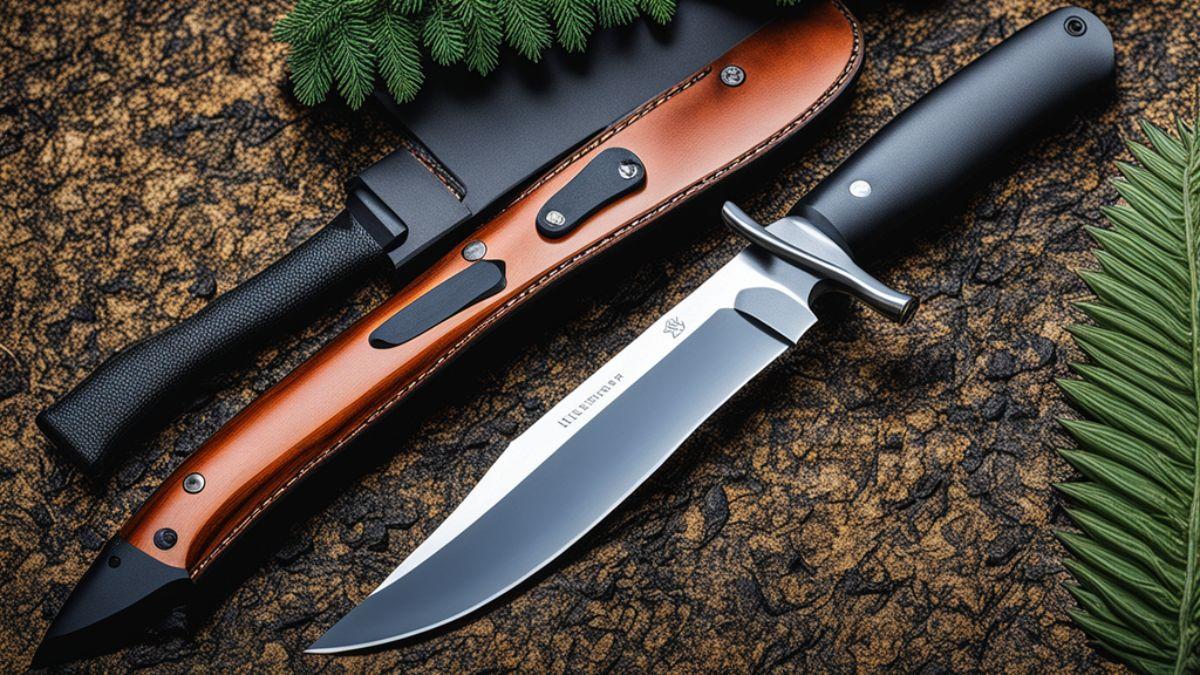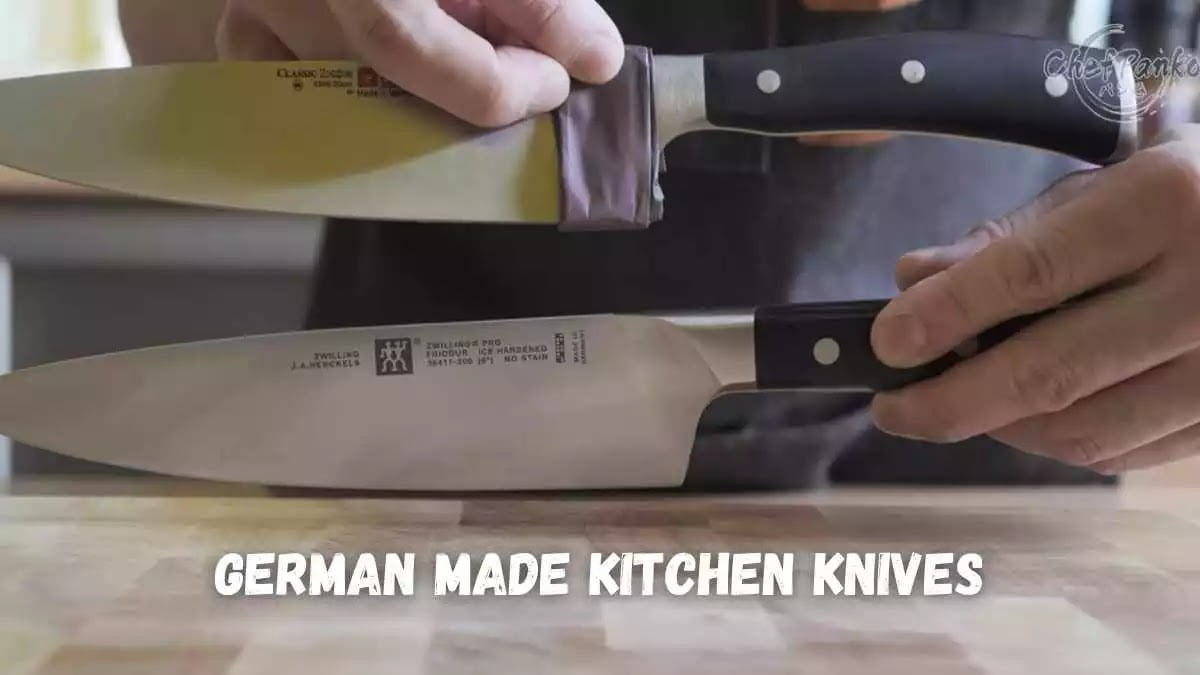
We may earn money or products from the companies mentioned in this post.
Have you ever noticed the knives with saw-like, jagged edges in your kitchen drawer? Those are blades with serrations, meant for certain kinds of cutting. Have you ever found it difficult to cut through a ripe tomato or a crusty loaf of bread? An ideal tool for tasks such as these is a serrated knife. Its teeth hold onto food that has hard crusts or skins and cut through it cleanly without squishing the insides.
A serrated knife should always be in your knife block if you prepare or bake a lot. You’ll question how you ever got by without one once you get the hang of using one. Cutting everything from pies and pastries to slicing sandwiches and subs is made easy work of with a decent serrated knife. One of the best specialty knives you may have in your kitchen is this one.
Thus, grab your serrated knife the next time you’re preparing fruit for a salad, slicing a loaf, or preparing bruschetta. Its effective and adaptable design makes it ideal for handling a wide variety of meals on slick or rough surfaces. Find out how using this handy gadget may improve the safety, convenience, and fun of your cooking time. With everything that your serrated knife has to offer, are you prepared to use it?
What Is a Serrated Knife?
A serrated knife, also known as a bread knife, has a blade with teeth or points that act like a saw. Unlike a smooth blade, the serrated edge grips the surface of the food to cut through tough skins and crusts.
Uses
The main purpose of a serrated knife is slicing bread, but it has many other useful applications:
- Baguettes and other crusty breads. The scalloped blade glides right through the crispy crust.
- Tomatoes. The tiny points on the blade pierce the skin without squishing the delicate fruit inside.
- Citrus fruits. Whether oranges, lemons, or limes, a serrated knife will cut through the rind and pith with ease.
- Pineapples. The prickly crown and stiff leaves are no match for the saw-like action.
- Cheese. Especially useful for slicing soft cheese, where a smooth blade would simply squish the cheese.
Compared to a smooth blade, a serrated knife demands a different cutting technique. Make a light cut, allowing the knife to do the heavy lifting. With a few gentle pressure strokes, move the knife back and forth. Avoid pressing down too hard and dragging the knife through the food all at once. You’ll quickly become proficient at precisely chopping and slicing with practice!
Your time in the kitchen will be safer, simpler, and more pleasurable if you use the right knife for the task and technique. An excellent serrated knife is a highly practical addition to any cutlery set.
Common Uses for Serrated Knives
A serrated knife comes in handy for all sorts of kitchen tasks. Its jagged edge helps slice through foods with tough skins or shells without crushing the inside.
Tackling crusty breads
There’s nothing quite like a fresh-baked loaf of bread. But have you ever tried slicing into one with a smooth blade? It squashes the bread and makes a mess. A serrated knife, on the other hand, cuts through the crusty exterior without damaging the soft innards.
Slicing tomatoes
The jagged teeth grip the tomato’s skin, allowing you to make clean cuts without the slices falling apart. The same goes for other fruits with slippery skins like peaches or plums.
Sawing through citrus
Whether you’re juicing oranges or need lemon wedges for fish and chips, a serrated knife gets the job done. Its pointed tip and sharp edge allow it to pierce citrus rinds and saw right through.
Dealing with meat
Ever had trouble slicing into a nice roast or whole chicken? The scalloped edge of a serrated knife acts like tiny teeth to grip meat and cut through muscle, fat, and connective tissue. It’s also great for slicing bacon, prosciutto, sausages, and other charcuterie.
As you can see, a serrated knife is one of the most useful tools in any kitchen. Keep one on hand, and you’ll find yourself reaching for it again and again to make quick work of all sorts of slicing and dicing tasks.
Types of Serrated Knives and Their Purposes
Serrated knives come in a variety of types for specific cutting tasks. The size and shape of the serrations determine what each knife does best.
Bread knife
The bread knife, as the name suggests, is designed for slicing bread. Its long, scalloped blade cuts through crusty loaves without squishing the soft inside. The scalloped edge grips the bread, so you can apply firm pressure. Use it for slicing bread, tomatoes, and other foods with soft flesh and hard skins.
Steak knife
A steak knife typically has a short, pointed blade with fine serrations. It is ideal for cutting into meats like steak, pork chops, and chicken. The sharp point and serrated edge allow you to pierce into even tough cuts of meat. Steak knives are meant to cut bite-sized pieces, so look for a set with different-sized knives for different appetites.
Utility knife
A utility knife, as its name implies, serves many general purposes. It has a medium-length blade and widely spaced serrations. Use it to cut sandwiches, slice cheese, chop fruits and vegetables, open packages, cut rope, and more. A utility knife can handle most everyday cutting tasks where a smooth blade would slip. It provides more control than a chef’s knife for casual cooking.
Pruning saw
bushes and tree limbs. You are able to see all the way through because the teeth cling to wood and sap. A foldable pruning saw that can trim branches up to 5 or 6 inches in diameter is what you should look for. Leverage for cutting at angles is provided by the offset grip and curved blade.
A good kitchen tool to have for slicing, dicing, and chopping is a serrated knife. Using the proper knife for the job makes cutting chores simpler and faster. Knives that are kept sharp will provide you plenty of use for many dinners to come.
How to Choose the Right Serrated Knife
Choosing a serrated knife that suits your needs depends on several factors. Think about what you primarily cut and your level of experience. The size, teeth style, and handle are all important to consider.
Size
For most home cooks, an 8 to 10-inch chef’s knife is a versatile size that can handle most tasks. If you frequently cut large roasts or bread loaves, go up to 12 inches. For small kitchens or travel, a 6-inch serrated knife will do the trick. Look for a blade width of 1.5 to 2 inches for good knuckle clearance.
Teeth Style
A knife with scalloped “points” is ideal for cutting soft foods like tomatoes, bread, and citrus. A wavy or “curved” edge works better on harder foods such as crusty bread. For all-purpose use, a knife with a mix of pointed and wavy teeth, known as a “hybrid” edge, is a great choice. The size and sharpness of the teeth also matter. Larger, more pronounced teeth are better for tough cuts, while smaller teeth give you more control over delicate foods.
Handle
Select a knife with an ergonomic grip that fits your hand well for comfort and control. Both plastic and wood handles are reasonably priced and long-lasting. High-end knives could feature a finger-grip molded handle. The safest grip is offered by a non-slip handle, particularly if your hands become wet when cooking a lot.
When you choose the proper serrated knife depending on how and what you cut most often, you’ll find yourself reaching for it again to cut through everything from juicy tomatoes to crusty bread. Purchasing a superior, multipurpose serrated knife is a wise investment that will enhance your culinary experience.
Caring for Your Serrated Knives
To keep your serrated knives in top working condition, you’ll need to take proper care of them. Neglecting serrated knife maintenance can lead to dull blades that don’t cut well and may become unsafe to use.
Hand Washing
It’s best to hand-wash serrated knives. Dishwashers can dull the blades over time and strip the handles of protective coatings. Gently wash serrated knives by hand with a mild detergent and warm water. Rinse and dry them immediately to prevent water spots. Don’t leave them soaking, as this can lead to rust.
Drying
Carefully dry your serrated knives with a soft cloth to prevent water damage. Don’t stack serrated knives together when drying, as this can lead to nicks in the blade edge.
Honing
Unlike smooth-bladed knives, serrated knives should not be sharpened with a whetstone. Instead, use a serrated knife sharpener, honing tool, or steel to realign the teeth, keeping the blades sharp. Gently slide the serrated knife through the sharpener at an angle, applying light pressure. Check the sharpness with your thumb—the blade should have a slightly rough, grabby feel. Repeat on the other side.
Storage
Store serrated knives in a wooden block, on a magnetic rack, or in a sheath to protect the blades. Don’t just throw them in a drawer where they can get damaged, dull, or nicked. Keeping serrated knives properly stored will help extend their lifespan.
With regular hand washing, drying, and honing, your serrated knives should provide many years of faithful service. While serrated knives may require a bit more care, keeping the blades in working order is worth the effort for performance and safety. Treat your serrated knives well, and they’ll treat you well in return!
Conclusion
You now understand the purpose of a serrated knife. A serrated knife may do tasks that a straight blade finds difficult, such as sawing tiny twigs, cutting rope or cord, or slicing through crusty bread. It is actually only possible to use a serrated edge on strong, fibrous materials. Knowing the advantages of serrated knives and how their teeth may grab surfaces can help you be ready the next time you have a difficult cut to make. You’ll be happy you added a good serrated knife to your assortment of cooking tools or equipment. It could turn out to be one of your most cherished and often-used tools.








